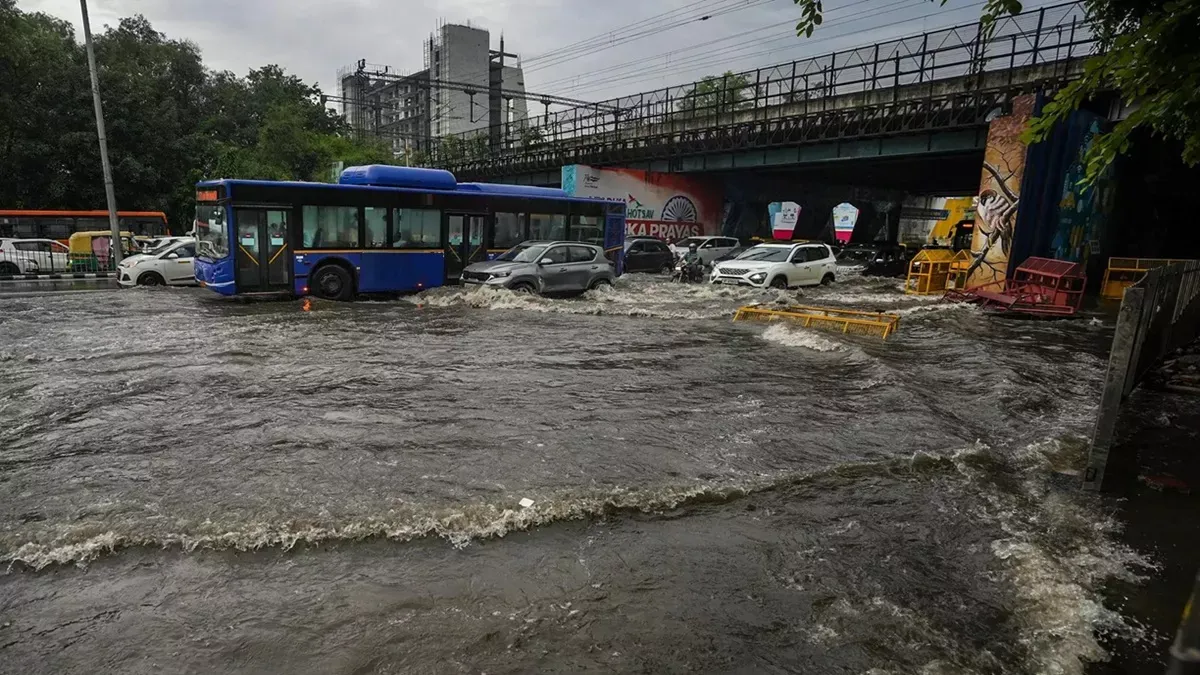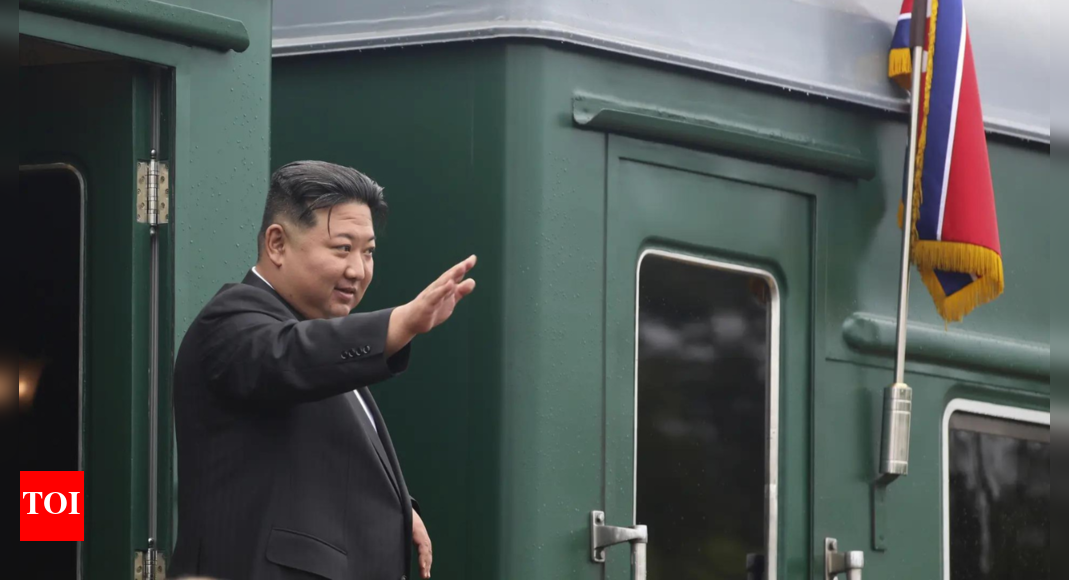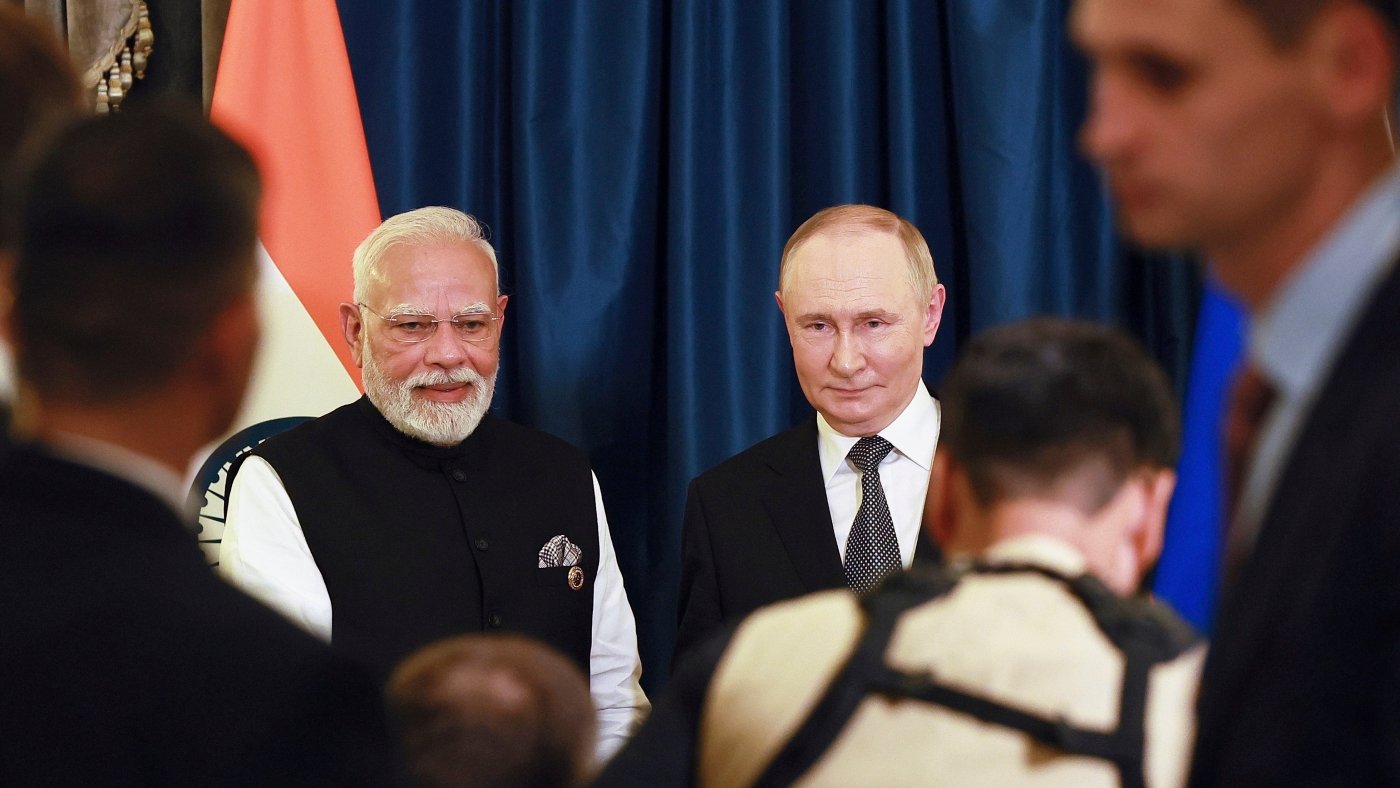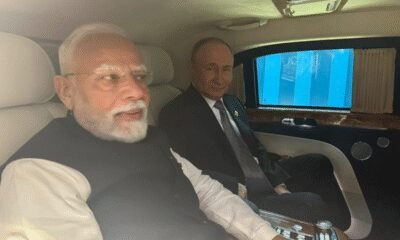Travel Guides & Articles
Mumbai, India Launches New Five Point Two Five-kilometer Promenade Along The Arabian Sea Coastline With Jogging, Cycling, And Family-friendly Facilities

Published on
August 16, 2025
Mumbai, India has unveiled a five point two five-kilometer promenade along the Arabian Sea coastline, designed to offer residents and visitors a safe, scenic, and accessible space for jogging, cycling, and family recreation. Stretching from Priyadarshini Park to Worli, the promenade not only provides stunning coastal views but also enhances urban connectivity, supports wellness, and creates a vibrant waterfront destination for all ages.
Mumbai has transformed its coastline with the inauguration of a magnificent 5.25-kilometer sea-facing promenade along the Coastal Road. Stretching from Priyadarshini Park to Worli, the promenade is more than twice as long as the iconic Marine Drive, offering residents and visitors a spectacular new way to experience the Arabian Sea. The project has quickly become a landmark attraction, promising to redefine how people interact with the city’s waterfront.
The promenade opens to the public from August fifteenth, providing an inviting space for strolling, jogging, and cycling. Wide, well-paved footpaths line the route, making it accessible for pedestrians of all ages. Lush landscaped gardens with flowering plants run alongside the walkway, enhancing its visual appeal. Wheelchair-friendly ramps ensure inclusivity, allowing people with mobility challenges to enjoy the coastline without obstacles. Strategically placed benches offer resting points where visitors can pause, relax, and soak in the serene atmosphere of the Arabian Sea.
Safety and connectivity are central to the promenade’s design. Four pedestrian underpasses have been constructed at key points along the route: Bhulabhai Desai Road, Haji Ali Junction, Worli Dairy, and Bindumadhav Thackeray Chowk. These underpasses allow pedestrians to cross busy intersections safely, while simultaneously reducing traffic congestion. By separating foot traffic from vehicles, the promenade offers a seamless experience for walkers and cyclists without compromising road safety.
The Coastal Road itself will now operate for 24-hour vehicular traffic from midnight on Independence Day. Advanced CCTV surveillance will monitor speed limits, ensuring both safety and smooth flow of traffic. The integration of pedestrian-friendly spaces alongside the busy Coastal Road demonstrates a careful balance between recreation and functionality, creating a harmonious urban environment.
Beyond the promenade, the area is undergoing a larger urban beautification project. Authorities have initiated ongoing efforts to enhance public spaces along the Coastal Road. These initiatives include improvements in landscaping, street lighting, and aesthetic enhancements that make the coastal route more inviting. Plans for a sprawling seventy-hectare park along the Coastal Road will further enrich recreational options, creating green zones where residents can exercise, picnic, or simply enjoy the outdoors.
Engineered on reclaimed land, the promenade is designed to withstand Mumbai’s heavy monsoon tides, making it a resilient structure that combines leisure with coastal protection. The promenade acts as a buffer against storm surges and high tides, safeguarding nearby areas from potential flooding. This dual-purpose approach highlights the city’s forward-thinking urban planning, where infrastructure development enhances both livability and environmental resilience.
The promenade’s design prioritizes community engagement and interaction with nature. Families can spend weekends walking along the seafront, children can play safely on the lawns, and fitness enthusiasts can enjoy uninterrupted jogging or cycling routes. The presence of flowering plants, manicured gardens, and shaded areas encourages visitors to linger, creating a vibrant social space that brings people together. Evening strolls offer particularly stunning views as the sun sets over the Arabian Sea, painting the skyline in shades of gold and orange, while morning joggers can enjoy the cool breeze and quieter atmosphere before the city awakens.
Cyclists also benefit from dedicated pathways that reduce conflicts with pedestrians. This encourages a healthier, eco-friendly lifestyle, promoting cycling as a sustainable mode of transportation. The promenade’s design demonstrates an understanding of modern urban needs, combining recreation, wellness, and environmental responsibility into a single cohesive space.
Accessibility remains a priority throughout the promenade. Wheelchair ramps, smooth pavements, and even-gradient pathways make it easy for people of all abilities to navigate the area. Signage is clear and informative, helping visitors find their way along the entire stretch. Public seating areas are spaced thoughtfully, allowing people to enjoy uninterrupted views of the coastline. Landscaping elements such as flowering shrubs and small trees not only enhance visual beauty but also provide natural shade and cooler microclimates along the walkway.
The promenade has already begun to redefine how residents experience Mumbai’s coastline. It offers a safe and inviting environment where people can exercise, relax, or simply enjoy the beauty of the sea. Morning walkers, evening joggers, and weekend families all find space to interact with nature in a vibrant, urban setting. Local photographers, tourists, and artists are likely to embrace the area for its visual appeal and serene ambiance, turning the promenade into a cultural as well as recreational hub.
In addition to leisure and recreation, the promenade enhances environmental sustainability. By integrating green landscaping, coastal reinforcement, and well-planned drainage systems, the project helps protect the city against flooding during monsoon seasons. The presence of trees and plants also improves air quality and encourages biodiversity, creating a healthier and more attractive urban environment.
Mumbai, India has opened a five point two five-kilometer promenade along the Arabian Sea, providing scenic jogging, cycling, and family-friendly spaces while enhancing urban connectivity and wellness for residents and visitors.
Overall, Mumbai’s new 5.25-kilometer Coastal Road promenade has become a striking addition to the city’s urban landscape. It blends recreation, accessibility, safety, and environmental protection into a single vibrant public space. From long walks by the sea to cycling sessions and quiet moments on benches overlooking the water, the promenade provides a dynamic space where Mumbaikars can reconnect with their city’s natural beauty. With ongoing developments such as the upcoming seventy-hectare park and continuous beautification efforts, the promenade marks a significant step forward in Mumbai’s transformation into a more livable, scenic, and sustainable city.
Travel Guides & Articles
Heavy Rains Lash Gurugram, Noida, Ghaziabad; Schools, Offices Closed, Airlines Issue Travel Advisory

Delhi-NCR Weather: The India Meteorological Department (IMD) has issued a heavy rainfall alert for Delhi-NCR, including Noida, Gurugram, and Ghaziabad, as relentless monsoon showers continue to lash northern India. Today’s weather forecast for Delhi warns of intense downpours throughout the day.
02/09/2025: 05:25 IST; Light to moderate rainfall is very likely to occur at Barwala, Jind, Mahendargarh, Rewari, Narnaul, Bawal, Nuh (Haryana) Saharanpur, Deoband, Muzaffarnagar, Bijnaur, Pilakhua, Hapur, Gulaoti, Sikandrabad, Bulandshahar, Shikarpur, Pahasu (U.P.) Bhiwari,
— RWFC New Delhi (@RWFC_ND) September 1, 2025
In Gurugram, heavy rains have triggered severe waterlogging and massive traffic jams, with reports of a 7-kilometre-long traffic snarl. The District Disaster Management Authority (DDMA) has issued an orange alert for the city, advising the closure of all schools, colleges, and offices, and encouraging work-from-home arrangements.
Meanwhile, Noida and Ghaziabad are also experiencing heavy rainfall. The IMD’s weather alert extends to Himachal Pradesh and Uttarakhand, where a red alert has been issued due to the risk of flash floods and extremely heavy rainfall. Punjab and Jammu & Kashmir remain under an orange warning. As per today’s forecast, schools and offices in affected regions are expected to remain closed to ensure public safety.
Travel Advisory
🚧⛈Heads up, #Delhi travellers!
Due to today’s downpour, several roads across #Delhi are currently blocked or experiencing slow movement.
Please allow extra time, take an alternate route if possible, and check your flight status on our website or app before…
— IndiGo (@IndiGo6E) September 1, 2025
Air India also issued a passenger advisory: ” Rain may impact flight operations to and from Delhi today. Please check your flight status here https://airindia.com/in/en/manage/flight-status.html before heading to the airport and allow extra time for your journey to the airport.”
Rain may impact flight operations to and from Delhi today.
Please check your flight status here https://t.co/5vemTROi62 before heading to the airport and allow extra time for your journey to the airport.
— Air India (@airindia) September 1, 2025
Delhi-NCR Rains: Avoid These Routes In Gurugram
Many parts of Gurugram experienced severe waterlogging on Monday following hours of continuous rain. Commuters reported flooding at major junctions including Hero Honda Chowk, Sohna Road, Narsinghpur stretch on NH-48, IFFCO Chowk, and Sectors 29 and 31. Traffic crawled along Golf Course Road and MG Road due to knee-deep water. Authorities have urged residents to avoid flood-prone areas during peak hours and to opt for alternate routes or work-from-home options where possible.
Delhi-NCR Rains: Are Schools, Offices Open In Gurugram Today?
Gurugram recorded over 100 mm of rainfall between 3 PM and 7 PM on September 1. In response to IMD’s orange alert, the District Disaster Management Authority has directed the closure of all offices on Tuesday (September 2), advising businesses to allow employees to work from home.
#Advisory – District Disaster Management Authority, Gurugram ⚠️
🌧️ Gurugram recorded over 100 mm of rainfall today (01 Sept, 3 PM – 7 PM).
📢 IMD Forecast: Orange Alert – Heavy to Very Heavy Rainfall on 02 Sept 2025.👉 Instructions issued:
All corporate & private offices in… pic.twitter.com/0XoVqXdbEJ
— DIPRO Gurugram (@diprogurugram1) September 1, 2025
All schools in the district have also been advised to conduct online classes on Tuesday, September 2, 2025.
Travel Guides & Articles
The slow train from North Korea: How Kim Jong-un is travelling to China

SEOUL: North Korea’s Kim Jong-un left Pyongyang by train on Monday on his way to Beijing, Yonhap news agency reported, relying on a slow but specialised form of transport that the country’s leaders have used for decades.It was not clear which train he used, but in the past he has used bulletproof trains that offer a safer and more comfortable space for a large entourage, security guards, food and amenities, and a place to discuss agendas ahead of meetings, experts say. Since becoming the head in late 2011, Kim has used a train to visit China, Vietnam, and Russia.It is unclear how many trains North Korean leaders have used over the years, but Ahn Byung-min, a South Korean expert on North Korean transportation, has said multiple trains were needed for security reasons.Ahn said those trains have 10 to 15 carriages each, some of which are used only by the leader, such as a bedroom, but others carry security guards and medical staff. They also usually have space for Kim’s office, communications equipment, a restaurant, and several car transportation carriages for two armoured Mercedes, he added.A video released in 2018 by North Korean state TV showed Kim meeting with top Chinese officials in a wide train car ringed with pink couches. The video also showed the carriage housing Kim’s office, with a desk and chair, and a map of China and the Korean peninsula.In 2020, state TV footage showed Kim riding a train to visit a typhoon-hit area, offering a glimpse of a carriage decorated with flower-shaped lighting and zebra-printed fabric chairs.When Kim Jong-un took the train to Russia, including in 2023 for a summit with President Putin, its wheel assemblies had to be reconfigured at a border station because the two countries use different rail gauges, Ahn said.While there is no such requirement for China, a Chinese locomotive pulls the train once it crosses the border, because a local engineer knows the rail system and signals, said Kim Han-tae, a South Korean former train engineer.Ahn noted the serial numbers were either 0001 or 0002, suggesting China was providing him with engines reserved for the most senior officials. The train can reach speeds of up to 80kms/hr on China’s network, compared with a maximum of about 45kms/ hr on North Korea’s tracks, Ahn said. North Korea’s founding leader, Kim Il Sung, Kim’s grandfather, travelled abroad by train regularly until his death in 1994.(Taken from Reuters)
Travel Guides & Articles
Modi and Putin affirm special relationship as India faces steep US tariffs over Russian oil imports : NPR

Indian Prime Minister Narendra Modi, left, and Russian President Vladimir Putin pose during their meeting on the sidelines of the Shanghai Cooperation Organization (SCO) summit in Tianjin, China, Monday, Sept. 1, 2025.
Vladimir Smirnov/AP/Pool Sputnik Kremlin
hide caption
toggle caption
Vladimir Smirnov/AP/Pool Sputnik Kremlin
TIANJIN, China — Indian Prime Minister Narendra Modi and Russian President Vladimir Putin met on the sidelines of a regional summit in China on Monday in a show of deepening ties when New Delhi’s relations with Washington are strained over the purchase of Russian oil.
The two leaders held talks after attending the key session of the Shanghai Cooperation Organization gathering in the port city of Tianjin, where discussions focused on regional stability, bilateral trade and energy cooperation.
In his remarks to open the talks, Modi termed the partnership with Moscow as “special and privileged.” Putin addressed Modi as a “dear friend” and hailed Russia’s ties with India as special, friendly and trusting.
“Russia and India have maintained special relations for decades. Friendly, trusting. This is the foundation for the development of our relations in the future,” Putin said.
Putin plans to travel to India in December for the 23rd India-Russia annual summit, according to his foreign affairs adviser, Yuri Ushakov.
Relationships on display
Modi used the SCO meeting to welcome the initiatives aimed at halting the conflict between Russia and Ukraine and called on the stakeholders to move forward constructively.
“To end the conflict soonest and establish peace permanently, we need to find out a way. It’s a call of the entire humanity,” Modi said.
Putin was accompanied by a large delegation that included top government officials. Russian state media reported that before sitting down for their formal meeting, Putin and Modi spoke one-on-one for almost an hour in a Russian-made limousine that Putin regularly takes on foreign trips.
Moments before the leaders lined up for a group photo, Modi was seen clasping Putin’s hand with the gusto of an old friend, bursting into his trademark hearty laughter. The moment was infectious as Putin grinned and chuckled, while Chinese President Xi Jinping gave a measured smile. The trio, ringed by watchful interlocuters, chatted animatedly for a few seconds.
Modi met Xi ahead of the opening of the summit Sunday and the two leaders pledged to resolve their border differences and bolster cooperation.
Washington pushing together China, Russia and India
Monday’s bilateral meeting between Modi and Putin carried added significance by coming days after U.S. President Donald Trump imposed an additional 25% tariffs on Indian imports, raising the total duties to a steep 50%, in retaliation for India’s continued purchases of discounted Russian oil.
Washington has repeatedly warned New Delhi against buying Russian crude, which it said was partly keeping Moscow’s revenues afloat to fund the Ukraine war. India has defended its imports as essential for meeting the growing energy needs of its 1.4 billion people.
Analysts said Trump’s steep tariffs and the tone coming from the White House have pushed New Delhi closer to China and Russia.
“While India-China reengagements started much before Trump, his policies are accelerating a process whereby India seems to be working much more closely with China and Russia to push back against economic unilateralism it is witnessing from the U.S.,” said Harsh Pant, vice president of foreign policy at New Delhi based think tank the Observer Research Foundation.
Modi travelled to Russia twice last year. The first was a visit to Moscow for talks with Putin in July, which was his first trip to Russia since the full-scale invasion of Ukraine by the Kremlin’s forces in February 2022. He then traveled to Kazan in October for the summit of the BRICS bloc of developing economies.
Trump’s reaction
As Xi, Putin and Modi showed extraordinary unity, Trump on Monday continued to jab at New Delhi.
As the summit wrapped up, Trump charged in a social media post that historically the U.S.-India trade relationship “has been a totally one sided disaster!” Trump also bristled about India surging its Russian oil purchases and signaled no trade deal with New Delhi is in sight.
“They have now offered to cut their Tariffs to nothing, but it’s getting late,” Trump said in the posting on his Truth Social platform. “They should have done so years ago. Just some simple facts for people to ponder!!!”
SCO nations share a history of business partnerships
Russia has had strong ties with India since the Cold War, and New Delhi’s importance as a key trading partner has grown since the war between Moscow and Ukraine.
China and India have become key buyers of Russian oil after the West shunned Russian exports to punish Moscow.
India historically bought most of its crude from the Middle East, but the world’s third-largest crude importer after China and the U.S. has started buying Russian oil available at discounted rates. Russia now accounts for around 37% of India’s total oil imports, according to analysts and Indian officials.
Trade between India and Russia has sharply increased in recent years, reaching a record $68.7 billion in the 2024-25 financial year. Imports from Russia reached around $64 billion and exports from India totaled about $5 billion, according to Indian government data.
The two nations aspire to bolster trade to $100 billion by 2030.
Modi’s meeting with Putin underscored New Delhi’s stance that India prized its old and reliable strategic partners and has sufficient strategic autonomy in its foreign policy to maintain and strengthen its multi-dimensional partnership, said Sreeram Sundar Chaulia, an international affairs expert at New Delhi’s Jindal School of International Affairs.
At the same time, the Indian government hopes the present rough weather between India and the U.S. is a temporary aberration, Chaulia said.
“Then, India can return happily to having the Russian cake and eating the American pie as part of its multi-alignment strategy,” Chaulia said.
-

 Business3 days ago
Business3 days agoThe Guardian view on Trump and the Fed: independence is no substitute for accountability | Editorial
-
Tools & Platforms3 weeks ago
Building Trust in Military AI Starts with Opening the Black Box – War on the Rocks
-

 Ethics & Policy1 month ago
Ethics & Policy1 month agoSDAIA Supports Saudi Arabia’s Leadership in Shaping Global AI Ethics, Policy, and Research – وكالة الأنباء السعودية
-

 Events & Conferences3 months ago
Events & Conferences3 months agoJourney to 1000 models: Scaling Instagram’s recommendation system
-

 Jobs & Careers2 months ago
Jobs & Careers2 months agoMumbai-based Perplexity Alternative Has 60k+ Users Without Funding
-

 Funding & Business2 months ago
Funding & Business2 months agoKayak and Expedia race to build AI travel agents that turn social posts into itineraries
-

 Education2 months ago
Education2 months agoVEX Robotics launches AI-powered classroom robotics system
-

 Podcasts & Talks2 months ago
Podcasts & Talks2 months agoHappy 4th of July! 🎆 Made with Veo 3 in Gemini
-

 Mergers & Acquisitions2 months ago
Mergers & Acquisitions2 months agoDonald Trump suggests US government review subsidies to Elon Musk’s companies
-

 Podcasts & Talks2 months ago
Podcasts & Talks2 months agoOpenAI 🤝 @teamganassi





















